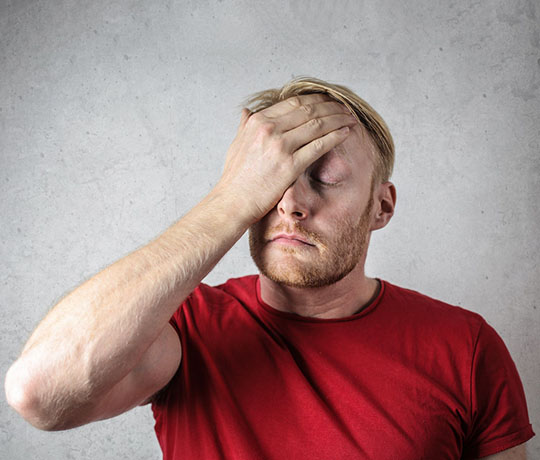Tension Headaches
Treatment for tension headaches involves removing fixed areas within the spine (subluxations) , reducing adjacent muscle spasm and improving the forward head posture.
Headache: The Journal of Head and Face Pain 2006 (Mar); 46 (3): 454?460
Twenty chronic tension-type headache (CTTH) subjects and 20 matched controls without headache participated. Trigger points (TrPs) were identified by eliciting referred pain with palpation, and increased referred pain with muscle contraction. Side-view pictures of each subject were taken in sitting and standing positions, in order to assess forward head posture (FHP) by measuring the craniovertebral angle. Suboccipital active TrPs and FHP were associated with CTTH. CCTH subjects with active TrPs reported a greater headache intensity and frequency than those with latent TrPs.
The degree of Forward head posture correlated positively with headache duration, headache frequency, and the presence of suboccipital active Trigger points.
Headaches
Headaches are one of the most common health complaints in the world. Getting rid of a headache fast when you have one is all-important, since even a mild one can slow you down and make you feel miserable. What’s even more important is uncovering the root cause of your headaches. If you’d like help with your headache, call us at Essendon Chiro for a thorough headache assessment and let provide solutions that can work for you.
Read on to learn about the three main types of headaches: tension, migraine and cluster.
1. Tension Headaches
This type, is by far the most common type of headache, often brought on by the sheer pace at which we live our lives today. Triggers can include poor posture, a stiff neck, muscle tension, accidents and stress. Tension headaches are usually felt as a dull ache on both sides of the head, sometimes described as a tight band across the head. They often begin at the base of the skull or in the neck and shoulders and get worse as the day goes on.
The pain you experience with a tension headache is believed to be caused by irritated nerves from tight muscles and locked spinal joints.
2. Migraine headache
Migraine headaches are often recurrent and can cause enough misery to limit almost all activity. About 2 million Australians get them with about 1.5 million of those being women.
There are two main types of migraine- the “common” and the “classical”. Common migraines have severe one sided head pain, throbbing pain aggravated by movement, nauseas or vomiting and sensitivity to light, noise or smells. Classical migraine is the same as common migraines except they also has visual disturbances such as flashing lights or blind spots.
The pain of migraine is caused by blood vessels in your head constricting and dilating, which causes a throbbing, pulsating sensation.
There are many well-recognised migraine triggers including certain foods, changes in the environment, hormonal triggers and lack of sleep or extreme emotions.
3. Cluster Headaches
Cluster headaches are not as common as the previous two and affect mainly men. Symptoms include sharp pain in and around one eye, reddened eyeballs, nasal congestion and facial swelling. Attacks can last up to three hours and repeat a few times each day. They can last for weeks or months and then not happen again for months or years. Call the professionals at Essendon Chiropractic Centre for your headache solutions now- let us provide your health care naturally!


